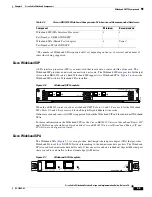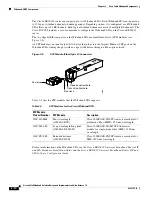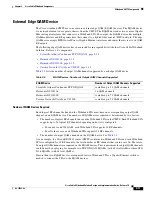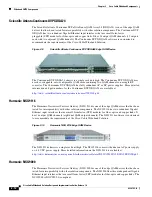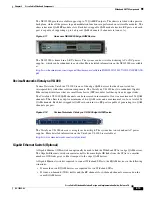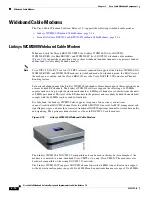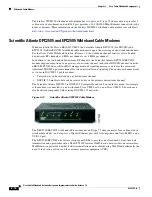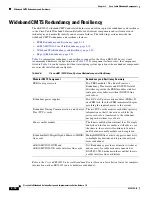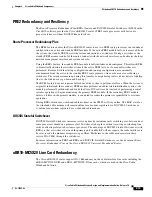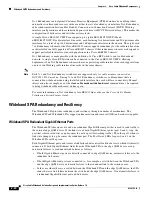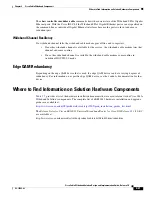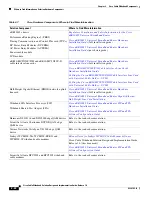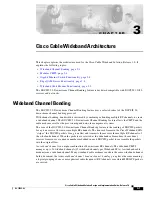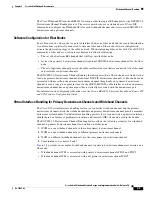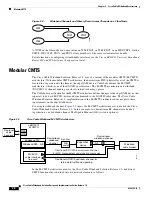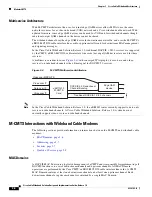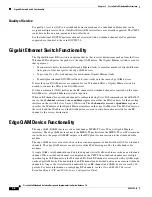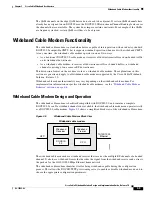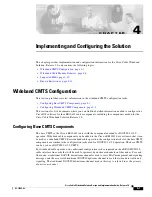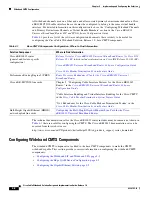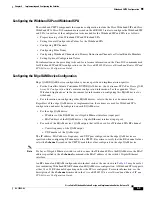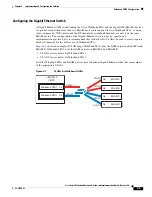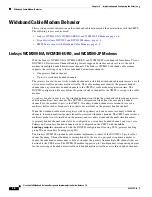
C H A P T E R
3-1
Cisco Cable Wideband Solution Design and Implementation Guide, Release 1.0
OL-10705-02
3
Cisco Cable Wideband Architecture
This chapter explains the architecture used for the Cisco Cable Wideband Solution, Release 1.0. It
explains the following topics:
•
Wideband Channel Bonding, page 3-1
•
Modular CMTS, page 3-4
•
Gigabit Ethernet Switch Functionality, page 3-8
•
Edge QAM Device Functionality, page 3-8
•
Wideband Cable Modem Functionality, page 3-9
The DOCSIS 3.0 Downstream Channel Bonding feature is backward compatible with DOCSIS 1.X/2.0
services and networks.
Wideband Channel Bonding
The DOCSIS 3.0 Downstream Channel Bonding feature uses a selected subset of the DOCSIS 3.0
downstream channel bonding protocol.
With channel bonding, bandwidth is increased by combining or bonding multiple RF channels to create
a wideband channel. The DOCSIS 3.0 Downstream Channel Bonding feature affects the CMTS and the
cable modem as well as the provisioning and network management systems.
The core of the DOCSIS 3.0 Downstream Channel Bonding feature is the sending of DOCSIS packets
for a given service flow across multiple RF channels. The transmit framer in the Cisco Wideband SPA
“stripes” the DOCSIS packets for a given flow and transmits them across the multiple RF channels of
the wideband channel. When the packets are received at the wideband cable modem, the modem’s
receiver framer uses a sequence number embedded in each DOCSIS packet to reassemble the packets
into the original flow.
A
wideband channel
is a unique combination of downstream RF channels. The wideband CMTS
manages up to 24 wideband channels (12 wideband channels per Wideband SPA). A wideband cable
modem joins a wideband channel. Many wideband cable modems can share the same wideband channel.
In this document, the terms
wideband channel
,
bonded channel
,
bonding group
have the same meaning:
a logical grouping of one or more physical radio frequency (RF) channels over which MPEG-TS packets
are carried.

